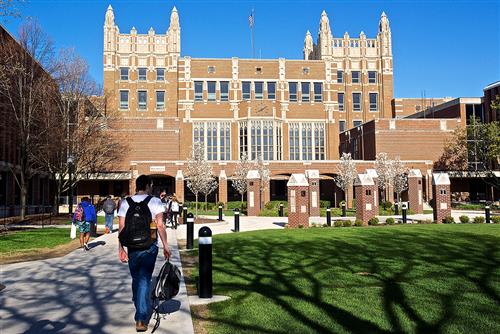DAS installation at Evanston Township HS extends public safety, cellular coverage
When staff at the enormous Evanston Township High School needed to use their radios, coverage depended entirely on their location. The school — which serves around 3,400 students and nearly 900 teachers and staff in a single building — is the largest high school under one roof in the country. Coverage in the school’s multiple wings was decent, but due to building materials, its older core building presented a major challenge for radio frequency penetration.
Keith Radousky, president of Radvisory 5G, first heard from a family member in local law enforcement in Evanston that coverage at the school was spotty and thought that, given the school’s size and RF challenges, it was a good candidate for a case study highlighting the efficacy of DAS. Now, a new distributed antenna system at the school is a potential glimpse at the types of partnerships that may emerge as more venues seek to expand public safety coverage and tie into AT&T’s network as it builds out the First Responders Network Authority spectrum.
The project is a showcase for Cobham Wireless and a number of other partners, who designed and installed the system at no cost to the school, with maintenance covered for the first five years. Participants included Radousky’s Radvisory 5G, RFS, Galtronics, Graybar, Chicago Communications, and Fullerton Engineering; AT&T contributed testing and engineering time.
AT&T has a cell site on the football field of the 60-plus acre campus of Evanston Township, Radousky said, but in the core of the building, the signal still degraded so much that school safety officers — who use AT&T push-to-talk for services — and staff had a difficult time using radio communications. In addition, Radousky noted,

cellular devices are often the first technology that students or staff would turn to in an in-school emergency, so cellular coverage needed to be improved as well. The new digital DAS was deployed over the summer and recently turned on; it supports both UHF and VHF coverage for public safety, four common cellular bands and is Band 14-ready, according to Matt Johnson, VP of sales for the Americas for Cobham Wireless.
“Problems over the years with in-building radio coverage to support public safety emergency and first responders necessitated the need to investigate ways to increase coverage within the High School,” said Perry Polinski, Evanston Police Department communication coordinator. He added that the department is “very pleased with the improvement in radio coverage.”
Warren Salek, AT&T assistant VP for radio access network, said that the carrier was “impressed by the collaborative efforts to achieve better and more reliable cellular and public safety communications inside ETHS.”
“The project has really shined a spotlight on the need for reliable in-building coverage in public buildings in order to keep communities safe,” said Thompson. “We’ve provided equipment for the likes of the Pentagon, the 2016 World Cup Stadiums, and the World Trade Center, so we have a strong history in both public safety and cellular deployments. We’re excited to now add Evanston to that list and highlight our next generation digital DAS system.”

